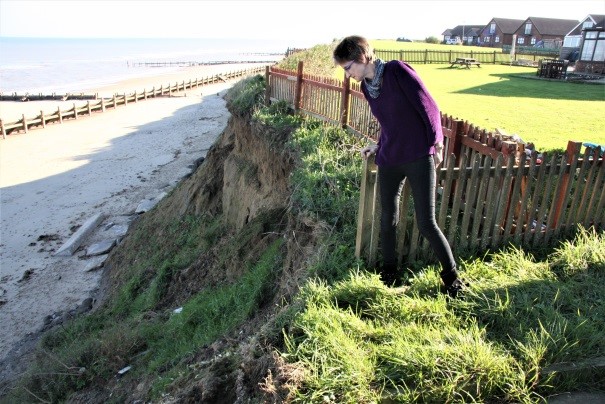The Bacton Gas Terminal and residents of the surrounding Norfolk villages will benefit from Dutch experience as Dutch experts provided the British with knowledge about the Sand Motor. It’s the first time in the UK that sandscaping will be used to provide a sustainable long-term solution.
The Dutch ‘Sand Engine’ concept – an example of Building with Nature – was used to design the coastal protection for Bacton. In this scheme 1.5 million cubic metres of sand will be placed along the coast to protect a 5km stretch of the UK’s east coast including the nationally critical Bacton Gas Terminal (operated by Shell and Perenco) together with its neighbouring communities.
Long-term coastal erosion is depleting the area’s beaches, leaving cliffs and seawalls exposed. Severe storms in 2007 and 2013 caused significant cliff erosion and flooding, underlining the project’s urgency. The project is a public-private venture of Bacton Gas Terminal together with North Norfolk District Council (NNDC), where NNDC is the Operator.
Royal Haskoning DHV is responsible for the design. Researchers of the scientific programme NatureCoast provided the initiators with advice during the preparation of the plans. Rijkswaterstaat also shared its knowledge.
Jaap Flikweert, Flood Resilience Leading Professional at Royal HaskoningDHV added: “In the Sandscaping initiative we are working with British partners to translate the Dutch Sand Engine to the very different context of the UK. It is all about using the natural energy of the sea to distribute the sand, and this can make sandy solutions affordable. It enhances the natural coastline without leaving a permanent mark, and can also be adapted and extended easily if needed in the future. Sandscaping also means design for multiple functions and stakeholders, to generate benefits and funding.”
Arjen Luijendijk from the scientific programme NatureCoast, also working at Deltares, was involved in the preparation of the plans. ‘At a couple of meetings in 2016 we presented our lessons learned regarding, for example about the redistribution of sand alongshore, the blown sand towards the houses behind the beach and the effect of storms on the Sand Engine. This knowledge was used to optimise the plans for the Sandmotor in Bacton and was useful in communication towards stakeholders.’
Royal HaskoningDHV’s work on the Environmental Impact Assessment (EIA) is underway, in collaboration with Deltares. The company will also prepare the business case to secure national Government funding, as well as developing the operations, maintenance and monitoring plan for the scheme with placement due to take place during summer 2018.

The first Sand Engine was introduced in 2011 on the Dutch coast and offers an effective soft coastal management solution making use of natural processes. The method entails depositing a large volume of sand in a location from which it is distributed by coastal processes over a larger part of the coast.
Royal HaskoningDHV was heavily involved in the design of the original Dutch concept, as well as delivering the Environmental Impact Assessment (EIA). The Bacton project is the first time the concept will be applied outside the Netherlands.
